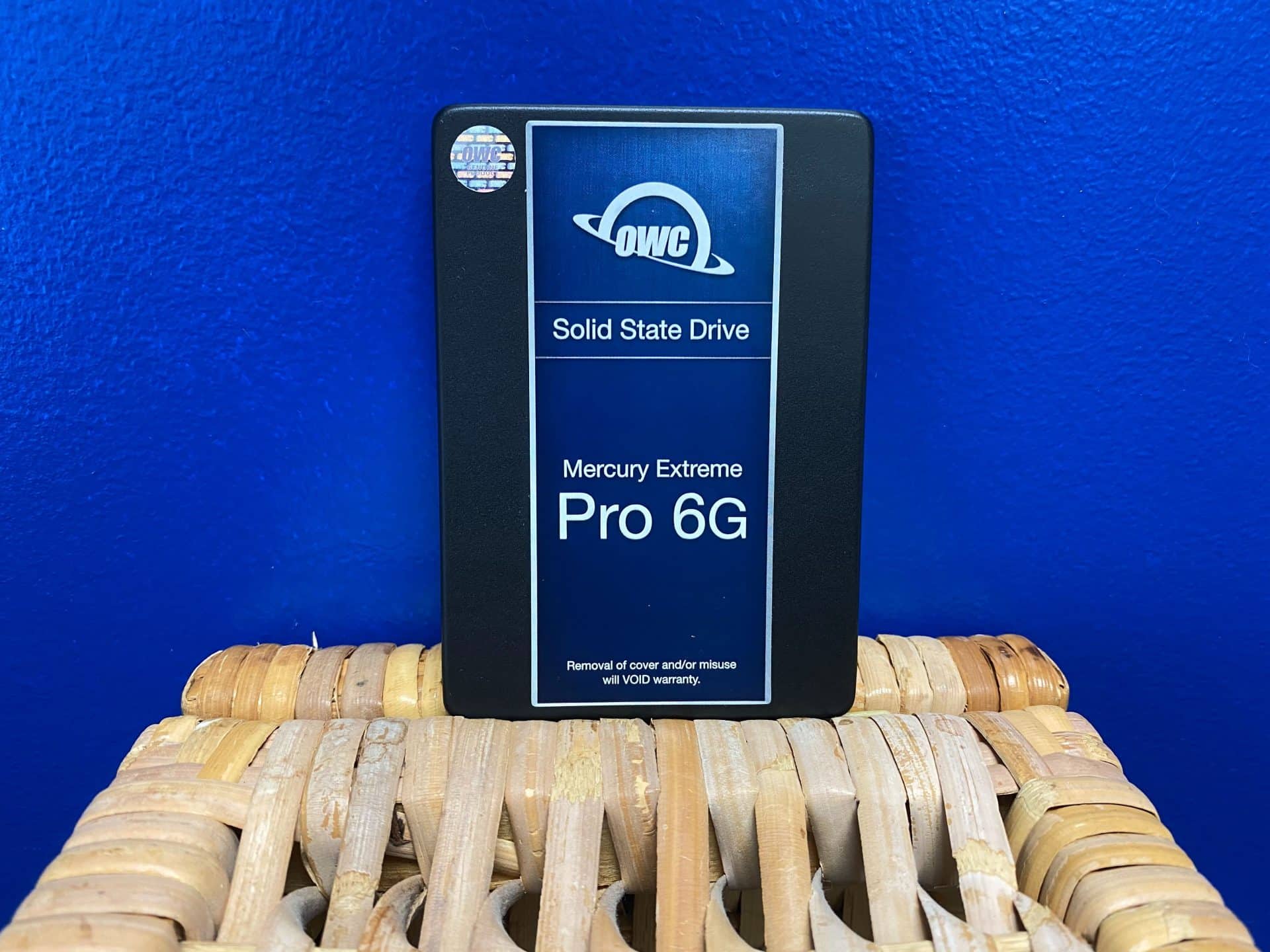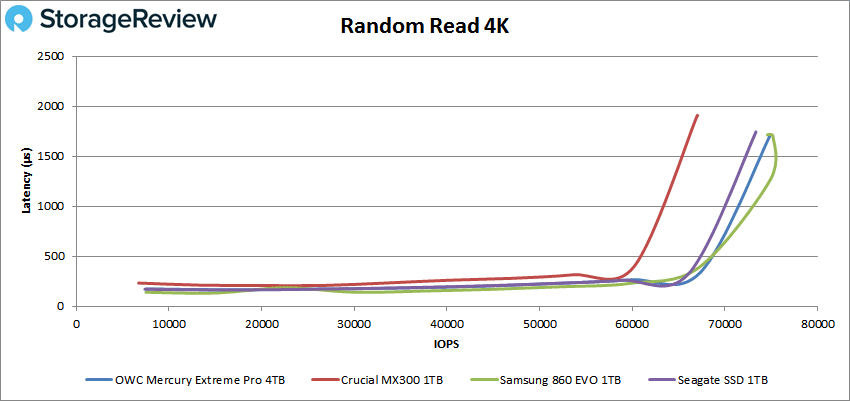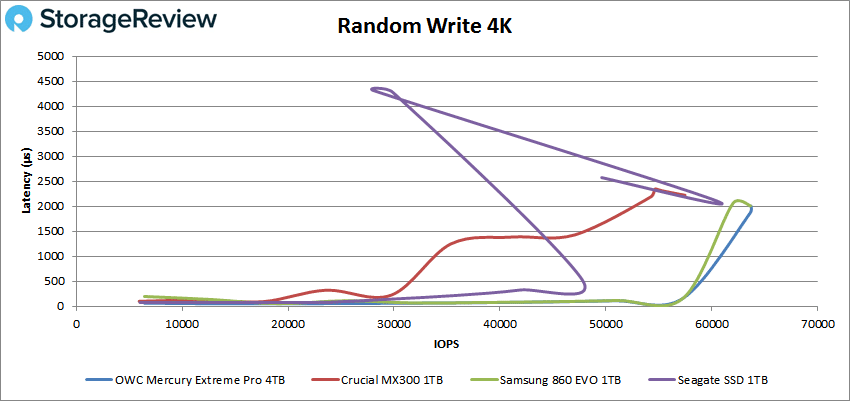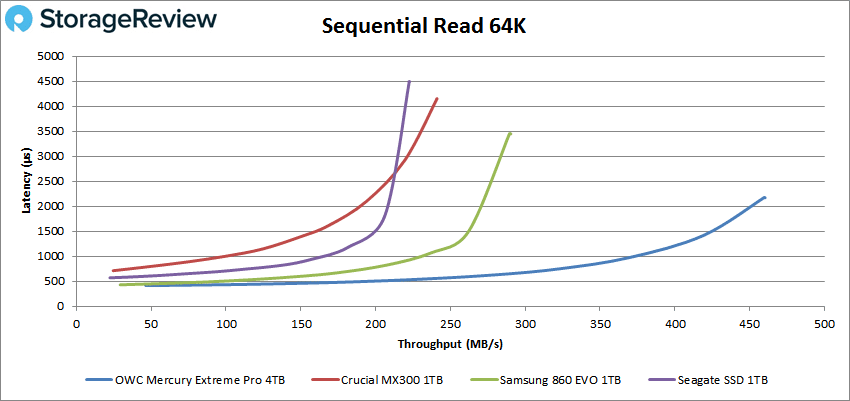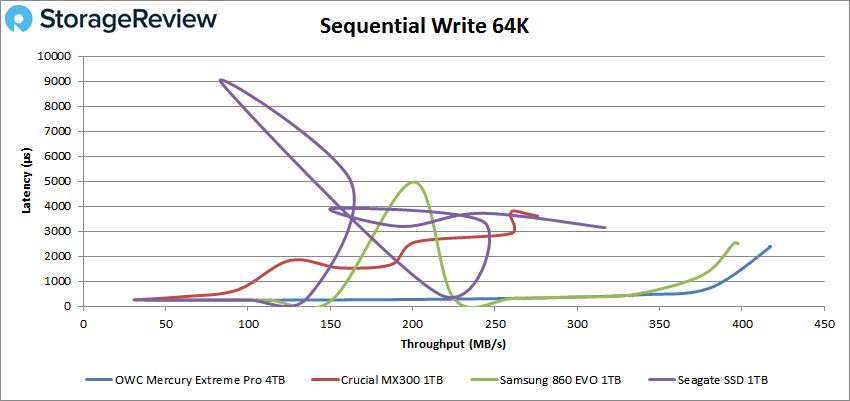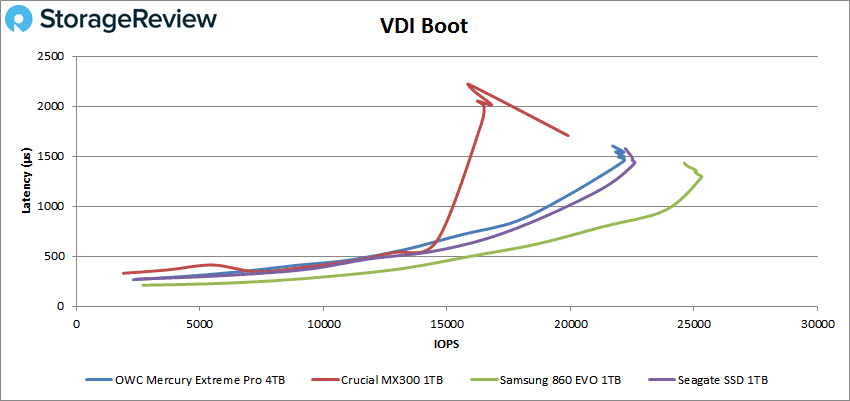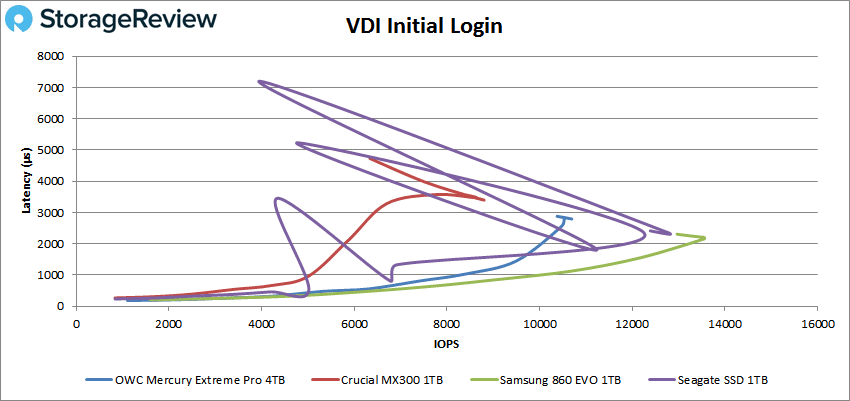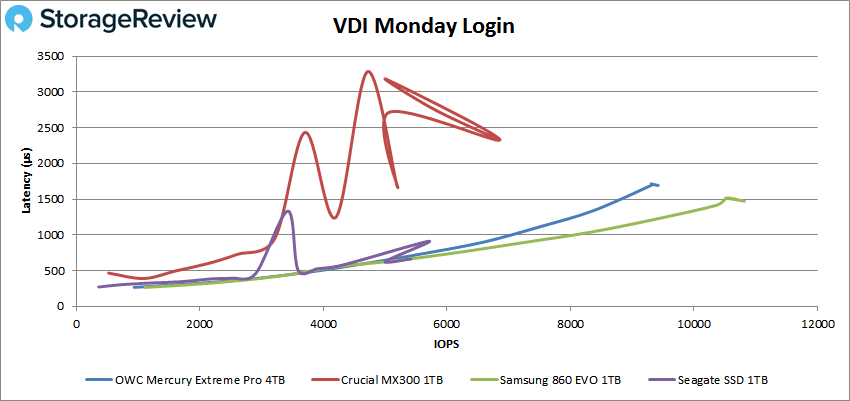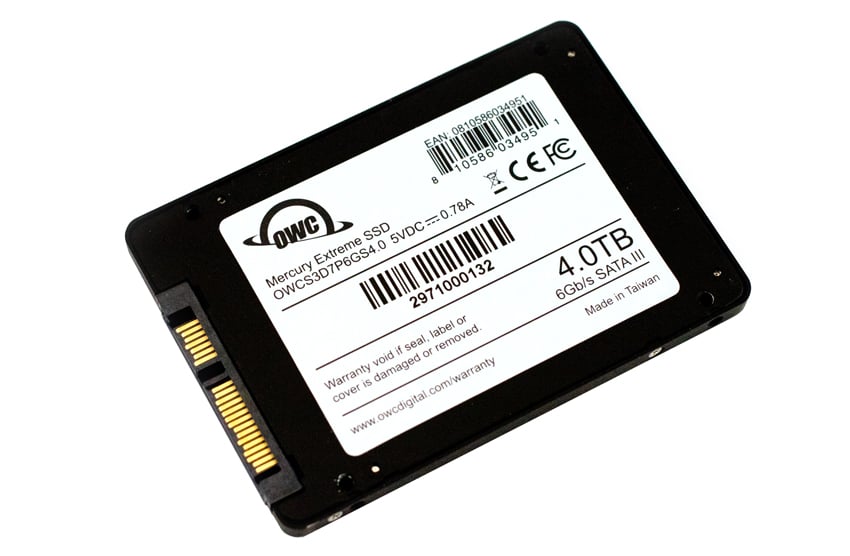Last month, OWC released a new 2.5” consumer SATA SSD with the OWC Mercury Extreme Pro 6G 4TB SSD. Made to work with either Macs or PCs, the new drive is aimed at creative professionals and aims to deliver good performance for those using high definition video, digital cinema, professional audio, and graphic production workflows. The new SSD will also work well as an upgrade to existing 2.5″ SATA deployments looking for increased performance or higher capacity.
Last month, OWC released a new 2.5” consumer SATA SSD with the OWC Mercury Extreme Pro 6G 4TB SSD. Made to work with either Macs or PCs, the new drive is aimed at creative professionals and aims to deliver good performance for those using high definition video, digital cinema, professional audio, and graphic production workflows. The new SSD will also work well as an upgrade to existing 2.5″ SATA deployments looking for increased performance or higher capacity.
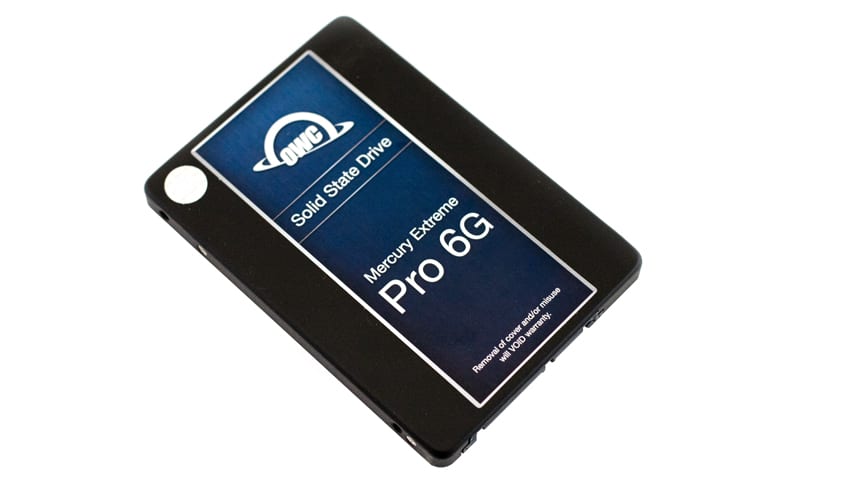
On the performance side of things, the OWC Mercury Extreme Pro 6G comes with quoted speeds of up to 550MB/s read, 530MB/s write, while random 4K performance is specced up to 100,000 IOPS. The SSD leverages synchronous TLC NAND and a Phison PS3112-S12 controller to hit the above numbers. OWC also states that this drive won’t see a performance drop after the cache is exhausted.
The OWC Mercury Extreme Pro 6G 4TB SSD comes with a 5-year warranty and a MSRP of $900.
OWC Mercury Extreme Pro 6G SSD Specifications
| Controller | Phison PS3112-S12 with 7% over-provisioning |
| NAND | Synchronous Triple-Level Cell (TLC) 3D NAND Flash |
| Form Factor | 2.5-inch 7mm |
| Interface | SATA 6.0 Gb/s |
| Capacity | 3968GB usable capacity Total Flash Memory Components – 4096GB 128GB allocated to real-time data redundancy & error correction |
| Formatted Capacity | 3695GiB |
| RAID Support | Yes |
| SMART Attributes | Standard attributes supported |
| Native Command Queuing | up to 32 commands |
| RoHS Compliant | Yes |
| Format | Unformatted |
| Physical | |
| Height (max) | 0.7 cm (0.3 in) |
| OWC 7mm – 9.5mm Adapter | 1 included |
| Width (max) | 7.0 cm (2.8 in) |
| Length (max) | 10.0 cm (3.9 in) |
| Weight | 77.0 g (0.17 lbs) |
| Reliability | |
| TRIM Support | OS Dependent |
| Performance | |
| Sequential Reads (Max) | Up to 550 MB/s |
| Sequential Writes (Max) | Up to 530 MB/s |
| Sequential 4K Read | Up to 100,000 IOPS |
| Sequential 4K Write | Up to 90,000 IOPS |
| Power | |
| DEVSLP / DevSleep | Up to 5mW |
| Environmental (Operating) | |
| Altitude | -304.8 m to 3,048.0 m (-1,000 ft to 10,000 ft) |
| Temperature (°F) | 32°F to 158°F |
| Temperature (°C) | 0°C to 70°C |
| Environmental (Non-Operating) | |
| Altitude | 304.8 m to 12,192.0 m (-1,000 ft to 40,000 ft) |
| Temperature (°F) | -40°F to 185°F |
| Temperature (°C) | -40°C to 85°C |
| Acoustics | |
| Idle (Typical) | 0.0 bels |
| Seek (Typical) | 0.0 bels |
Performance
Testbed
The test platform leveraged in these tests is a Dell PowerEdge R740xd server. We measure SATA performance through a Dell H730P RAID card inside this server, although we set the card in HBA mode only to disable the impact of RAID card cache. NVMe is tested natively through an M.2 to PCIe adapter card. The methodology used better reflects end-user workflow with the consistency, scalability and flexibility testing within virtualized server offers. A large focus is put on drive latency across the entire load range of the drive, not just at the smallest QD1 (Queue-Depth 1) levels. We do this because many of the common consumer benchmarks don’t adequately capture end-user workload profiles.
VDBench Workload Analysis
When it comes to benchmarking storage devices, application testing is best, and synthetic testing comes in second place. While not a perfect representation of actual workloads, synthetic tests do help to baseline storage devices with a repeatability factor that makes it easy to do apples-to-apples comparison between competing solutions. These workloads offer a range of different testing profiles ranging from “four corners” tests, common database transfer size tests, to trace captures from different VDI environments. All of these tests leverage the common vdBench workload generator, with a scripting engine to automate and capture results over a large compute testing cluster. This allows us to repeat the same workloads across a wide range of storage devices, including flash arrays and individual storage devices. Our testing process for these benchmarks fills the entire drive surface with data, then partitions a drive section equal to 5% of the drive capacity to simulate how the drive might respond to application workloads. This is different than full entropy tests which use 100% of the drive and take them into steady state. As a result, these figures will reflect higher-sustained write speeds.
Profiles:
- 4K Random Read: 100% Read, 128 threads, 0-120% iorate
- 4K Random Write: 100% Write, 64 threads, 0-120% iorate
- 64K Sequential Read: 100% Read, 16 threads, 0-120% iorate
- 64K Sequential Write: 100% Write, 8 threads, 0-120% iorate
Comparables for this review:
In 4K random read the OWC Mercury Extreme Pro 6G had the second highest peak performance with 74,837 IOPS at a latency of 1.7ms.
4K random write had the OWC squeak out a top spot with 63,660 IOPS and a latency of 2ms.
Switching over to sequential work, the OWC took the top spot by a large margin with a peak performance of 7,366 IOPS or 460.4MB/s at a latency of 2.2ms in 64K read
For 64K write the OWC once again took the top spot with 6,678 IOPS or 417.4MB/s at a latency of 2.4ms.
Next, we looked at our VDI benchmarks, which are designed to tax the drives even further. Here, the new Crucial drive struggled to keep up with the other tested drives. In Boot, the OWC came in third with a peak performance of 22,171 IOPS at a latency of 1.5ms before dropping off some.
Looking at our VDI Initial Login, we saw the OWC take third once more with a peak of 10,692 IOPS at a latency of 2.8ms.
Finally with VDI Monday Login the OWC came in second with a peak of 9,419 IOPS at a latency of 1.7ms.
Conclusion
The OWC Mercury Extreme Pro 6G 4TB SSD is a 2.5” form factor, SATA SSD that is a great option to replace an aging HDD with. The drive is custom built for Macs or PCs that need an upgrade. OWC states speeds up to 550MB/s and 100K IOPS. The drive is aimed at and ideal for creative professionals that work with high definition video, digital cinema, professional audio, and graphic production workflows.
For performance, the OWC gave us very consistent performance compared to the other drives tested. The drive came in first in our 4K random write (64K IOPS), 64K read (460MB/s), and 64K write (417MB/s). The OWC placed second in 4K read (75K IOPS) and VDI Monday Login (9,419 IOPS). And the drive took third in our VDI Boot (22K IOPS) and VDI Initial Login (11K IOPS).
The OWC Mercury Extreme Pro 6G SSD brings up to 4TB of capacity and consistent performance to setups that need an SSD upgrade.
OWC Mercury Extreme Pro 6G 4TB on Amazon
Engage with StorageReview
Newsletter | YouTube | Podcast iTunes/Spotify | Instagram | Twitter | Facebook | RSS Feed

